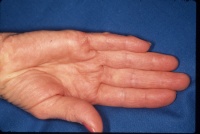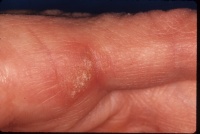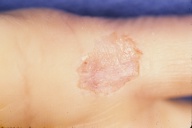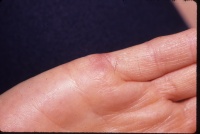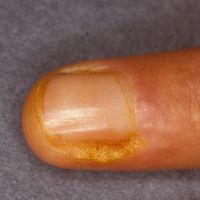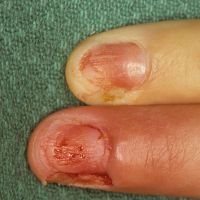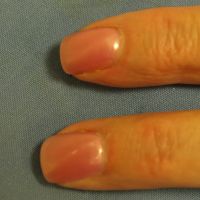| Warts are
common on the hand. They are thought to be due to viral
mediated intradermal hyperkeratosis. Most warts involute spontaneously
over an average of a two year lifespan, and are considered chronic
after two years. Many treatment options exist, including topical
irritants, oral cimetidine, electrofulguration, laser cauterization,
cryosurgery and surgical excision. The proliferative process is
intradermal, and local treatment with curettage under local anesthesia
is often effective. This is a useful option for recalcitrant warts
which either involve the eponychial fold or are mutifocal and confluent
and is an alternative to excision and resurfacing with a skin graft or
local flap. Curettage is also appropriate treatment for pyogenic
granuloma. The following cases illustrate treatment of warts with
curettage. |
